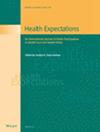Stakeholder Involvement in the Development of a New Proactive Clinical Review of Patients Prescribed Opioid Medicines Long-Term for Persistent Pain in Primary Care
Abstract
Background
Stakeholder involvement is a core element of the Medical Research Council (MRC) framework for developing and evaluating complex interventions, but approaches to involve stakeholders are not well-reported. We outline how stakeholders contributed to co-designing a Proactive clinical Review of patients taking Opioid Medicines long-term for persistent Pain led by Pharmacists working in primary care Teams (the PROMPPT intervention—a review and pharmacist training package).
Methods
We brought key stakeholders together to co-design the PROMPPT intervention using a person-based approach, alongside evidence from best practice guidance. We established a community of practice comprising three complementary groups: a patient advisory group, a pharmacist advisory group and a mixed stakeholder group. Patient stakeholders were identified from an existing patient involvement group. Professional stakeholders were identified using networks and social media. The three groups met in iterative workshops with predefined aims. We offered reimbursement for the stakeholders' time.
Outcomes
The patient advisory group (n = 10), pharmacist advisory group (n = 6) and mixed stakeholder group (n = 16) each met for 2 or 3 workshops between April 2019 and February 2020. Stakeholders had expertise, often cross-cutting, in lived experience, persistent pain, opioids, delivering primary healthcare and/or promoting behaviour change. Patient stakeholders provided their perspectives of consulting about their pain and opioids. Pharmacist stakeholders provided their perspectives on how pain reviews were happening in practice and on considerations for training (e.g., vignettes and experiential learning were considered important). The mixed stakeholder group provided a breadth of views highlighting current practice, including the value of engaging the wider GP practice team, issues around clinical responsibility for prescribing and the fact that international clinical guidance was not always relevant to UK primary care.
Conclusions
By understanding the context of the PROMPPT intervention, stakeholders worked to develop a new pharmacist-led primary care review ahead of feasibility testing. We make recommendations for future developers of complex interventions.
Patient and Public Contribution
Patient stakeholders, including a lay co-applicant (C.S.) supported by a PPI support worker (A.H.), helped develop and refine the intervention. C.S. and A.H. read and contributed to the initial manuscript and approved the final manuscript.


 求助内容:
求助内容: 应助结果提醒方式:
应助结果提醒方式:


